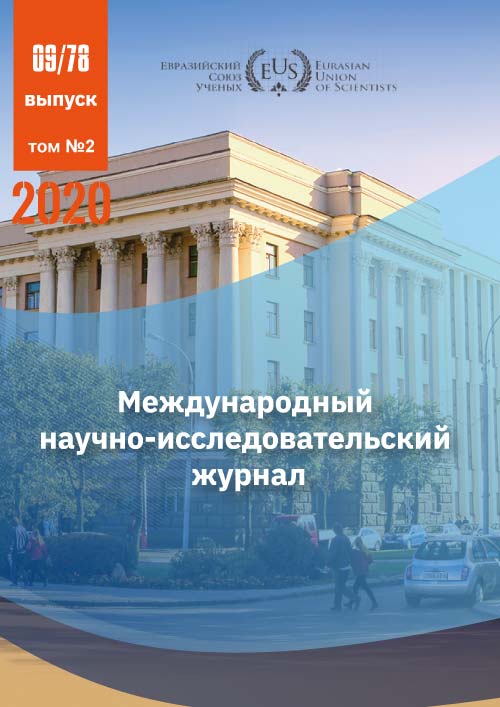POLYSOMNOGRAPHIC CHARACTERISTICS AND CPAP TREATMENT OUTCOME OF OBSTRUCTIVE SLEEP APNAE PATIENTS IN MONGOLIA
Abstract
Obstructive sleep apnea (OSA) is a syndrome of recurrent, partial, or complete upper airway collapse during sleep. These events often result in reductions in blood oxygen saturation and usually terminates by brief arousals from the sleep. Shortness of breath during sleep is a result of weakening of the airway muscles, narrowing of the pharyngeal wall and the upper respiratory tract at the level of the nasopharynx. (1) The first symptom of NAP is drowsiness during the day, resulting in diminished attention and drowsiness. In addition, complications such as heart attack, low blood pressure??, respiratory and cardiovascular failure, high blood pressure, and cardiac arrhythmias are common
References
2. Howard ME, Desai A V., Grunstein RR, Hukins C, Armstrong JG, Joffe D, et al. Sleepiness, sleep-disordered breathing, and accident risk factors in commercial vehicle drivers. Am J Respir Crit Care Med. 2004;170(9):1014–21.
3. Html F. Sleep Disorders. 2018. 10–16 p.
4. Chasens ER. Obstructive sleep apnea, daytime sleepiness, and type 2 diabetes. Diabetes Educ. 2007;
5. M. K, J. H, H. H, O. N. A sleep apnea related risk of vehicle accident is reduced by CPAP-Swedish traffic accident data acquisition (STRADA) registry. J Sleep Res. 2014;
6. Young T, Peppard PE, Gottlieb DJ.
Epidemiology of obstructive sleep apnea: A population health perspective. American Journal of Respiratory and Critical Care Medicine. 2002.
7. Walia HK, Thompson NR, Katzan I, Foldvary-Schaefer N, Moul DE, Mehra R. Impact of sleep-disordered breathing treatment on quality of life measures in a large clinic-based cohort. J Clin Sleep Med. 2017;13(11):1255–63.
8. Kapur VK, Auckley DH, Chowdhuri S, Kuhlmann DC, Mehra R, Ramar K, et al. Clinical Practice Guideline for Diagnostic Testing for Adult Obstructive Sleep Apnea: An American Academy of Sleep Medicine Clinical Practice Guideline. J Clin Sleep Med J Clin Sleep Med J Clin Sleep Med. 2017;
9. McNellis RJ, Thomas S. Screening for obstructive sleep apnea in adults. American Family Physician. 2017.
10. Health Quality Ontario HQ. Polysomnography in patients with obstructive sleep apnea: an evidence-based analysis. Ont Health Technol Assess Ser. 2006;
11. Berry RB, Budhiraja R, Gottlieb DJ, Gozal D, Iber C, Kapur VK, et al. Rules for scoring respiratory events in sleep: Update of the 2007 AASM manual for the scoring of sleep and associated events. J Clin Sleep Med. 2012;
12. Teichtahl H, Cunnington D, Cherry G, Wang D. Scoring polysomnography respiratory events: The utility of nasal pressure and oro-nasal thermal sensor recordings. Sleep Med. 2003;
13. Yaggi HK, Strohl KP. Adult obstructive sleep apnea/hypopnea syndrome: definitions, risk factors, and pathogenesis. Clinics in Chest Medicine. 2010.
14. Kapur VK. Obstructive sleep apnea: diagnosis, epidemiology, and economics. Respir Care. 2010;
15. O’Keeffe T, Patterson EJ. Evidence Supporting Routine Polysomnography before Bariatric Surgery. In: Obesity Surgery. 2004.
16. Asrade S, Mengesha Y, Moges G, Gelayee DA. Am J Respir Crit Care Med Vol 163. pp 685–689, 2001Internet address: www.atsjournals.orgObstructive Sleep Apnea–Hypopnea and RelatedClinical Features in a Population-based Sample of Subjects Aged 30 to
70 Yr. J Exp Pharmacol. 2017;163(1996):685
17. Zinchuk A V, Jeon S, Koo BB, Yan X, Bravata DM, Qin L, et al. Polysomnographic phenotypes and their cardiovascular implications in obstructive sleep apnoea. Thorax. 2017;
CC BY-ND
A work licensed in this way allows the following:
1. The freedom to use and perform the work: The licensee must be allowed to make any use, private or public, of the work.
2. The freedom to study the work and apply the information: The licensee must be allowed to examine the work and to use the knowledge gained from the work in any way. The license may not, for example, restrict "reverse engineering."
2. The freedom to redistribute copies: Copies may be sold, swapped or given away for free, in the same form as the original.







